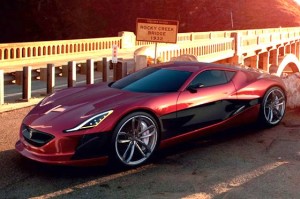10 Facts About Supercars
Today’s supercars are faster lighter, safer, cleaner and more efficient than ever before, as they push physics to the limit to deliver the ultimate thrill behind the wheel.
The world of the supercars has never been more advanced, and here’s how some of the market’s leading supercar companies are doing all they can to go that extra mile…
Fact: With an alleged top speed of 415 km/h (258 mph) and 1,408 kW (1,914 PS; 1,888 hp), the Rimac C Two car is claimed to be capable of reaching 60 mph from a standstill in 1.85 seconds, making it potentially one of the fastest accelerating cars ever made.
Fact: The first car in the world to hit 322 kilometres (200 miles) per hour was a purpose-built land speed machine driven by Sir Henry Seagrave at Daytona Beach in 1927.
Fact: The first car that had a propulsion power more than one megawatt, or 1,000 kW, was Koenigsegg One:1. For speeding up to 400 kph it takes 21.5 seconds.
Fact: The Ferrari LaFerrari was produced in just 499 copies and it is enough to talk about what a road car is this. Many say this model is the ‘king’ of all Ferrari cars…
Fact: The Bugatti Veyron was (for a time) the fastest production car on Earth with a hefty 736 kilowatts (1,000 brake horsepower) helping to produce a Jaw- dropping top speed of 408 kilometres (335 miles) per hour. Later Hennessey Venom GT with 435 kph took this title.
Fact: In early-2013, the Hennessey Venom GT broke the record for the quickest dash to 300 kilometres (186 miles) per hour, taking just 13.63 seconds to do so.
Fact: A glut of ultra-lightweight chassis and body panels are now used to help keep the overall weight of these cars at large to a minimum, greatly increasing a car’s power-to-weight ratio – essential for extracting maximum power.
 Fact: Supercars need to be low to the ground for maximum traction, as poor grip makes for bad handling and, more importantly, no acceleration.
Fact: Supercars need to be low to the ground for maximum traction, as poor grip makes for bad handling and, more importantly, no acceleration.
Fact: Supercars need to be very aerodynamic with as little drag on the body as possible, to enable the car to slip through the air with minimal resistance. For this reason most supercars now use active aerodynamics to reach such crazy figures, with the bodywork and even chassis automatically adjusting to best manage the flow of air and pressures on the car when travelling at certain speeds.
Fact: Porsche’s active rear wheel steering (which changes the direction of the rear axle by a few millimetres to allow corners to be taken more directly and at greater speed) provide small improvements to 0-60 times and top speeds.
See Top Supercars:
Rimac Concept One – McLaren P1 Supercar – Porsche 918 Spyder Hybrid – Koenigsegg Agera R Compact Supercar
